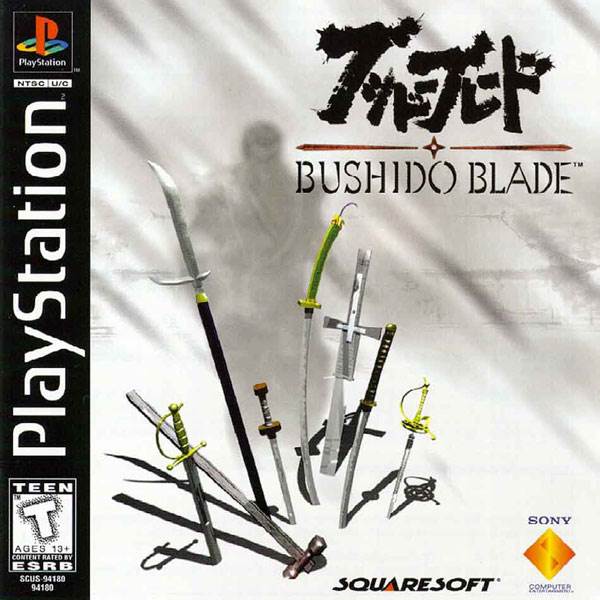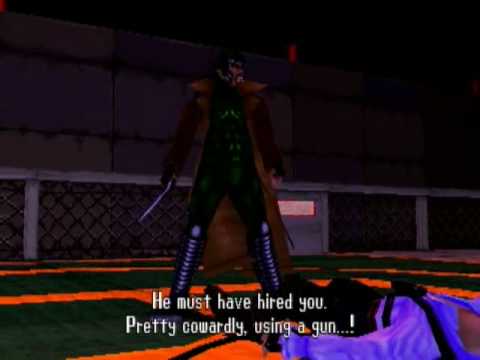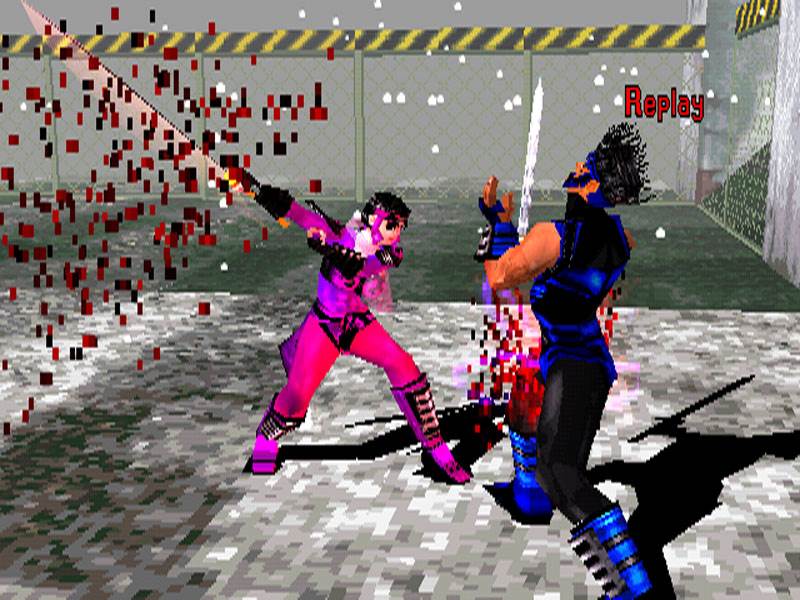
There’s something about samurai or ninja themed media, its blend of honor and violence, that makes its appeal both perennial and difficult to discard. In many ways, it mirrors America’s romanticized depiction of the Old West – a comparison not lost on those who craft these tales. You need a good story for those kinds of things; it needn’t be overly complex, but if it’s not an interesting saga, is it really a saga?
I mentioned Bushido Blade in a previous article, but I wanted to be fair to it and give it what it deserves here at NRW: its own more detailed treatment. Released in 1997, it was one of my formative experiences with the PlayStation 1, and it remains one of my go-to discs in my modest PS1 library. In fact, as I went to begin this article, I did what I often do – get the game itself cued up so I can alternate between playing and writing – and Bushido Blade was already sitting in the disc tray when I opened it. Go figure.
The main appeal of Bushido Blade for me (and I’d bet real life big kid money I’m not alone) is its versatility as a source of diversion. It is a blast to play with another person in VS mode, but it also contains a really cool “modern day” samurai drama for solo play that engages you without being overly complex or convoluted. Square (who published this game but still played a role in its development) can occasionally be guilty of that kind of thing with a storyline, but I feel like the influence they had is a net positive here. As perhaps the last truly solid console of its era, the PS1 saw a lot of games published for it; while I don’t talk about it much, it’s certainly significant to the history we so often examine in these articles. I believe Bushido Blade to be one of its most worthwhile titles.

The storyline revolves around two fictional institutions, holdovers from 500+ years back in Japan’s history: a dojo called Meikyokan, and a guild of assassins known as Kage (fittingly, the Japanese word for shadow) who live within the dojo. One of the six playable characters, Utsusemi, led the dojo until he was violently deposed by his rival Hanzaki. Hanzaki later gained possession of a cursed sword, and its evil influence changed him into a wicked man who has discarded the internal values and traditions of the Kage. This includes treating the dojo more or less as a prison for those within the school who disagree with his new path. The story past this point has variations depending upon which character you choose, but the common theme is that you have escaped the dojo as a defector. Cut scenes with subtitled Japanese dialogue act as bridges between brutal fights in various urban and rural locales, including parking decks, bamboo forests, and construction sites. After all, they can’t just let you go, right?
What truly made (and still makes) Bushido Blade stand out among fighting games is its damage system. Each character can use all of the available weapons in the game, but has an aptitude with certain types (translation: a slightly better move set). When different types of attack strike different parts of an opponent’s anatomy, they can maim, cripple, handicap, slow down, or instantly kill the victim. There is no life bar; violence and death in Bushido Blade are presented in a far less abstract fashion, with some realism in mind. Another layer of detail is added by the different stances one can take while wielding the various weapons. Each one has its own advantages and drawbacks, with some favoring defense and others being suitable for a balls-to-the-wall attack. You can also break into a trot or make quick feints. Bushido Blade is nearly incomparable to conventional fighting games of its time, breaking from tradition and convention in an earnest (and successful) attempt to show fighting for what it truly is: intense, uncompromising, quick, and lethal.

Alternate modes of play exist beyond VS mode and the single player story. One is a pretty cool “POV mode,” where you can dual from a first-person view against a computer opponent. Another is Slash Mode, where you face off against foe after foe after foe in an effort to survive as long as possible. I particularly enjoy this one as a chance to hone my skills for the main run. The challenge increases very gradually and it’s a fun way to burn an hour or two when you get into it.
I can’t heap mounds of praise upon the graphics, nor can I take a shit on them. PS1 graphics, for the most part, are what they are: low-poly, but well-animated and executed low-poly. One visual bit they did well was the blood; it is tastefully kept to moderation, but visually striking and appropriately used to convey what blood is meant to convey in theatrical terms. The soundtrack is used sparingly but is very good; it emulates traditional Japanese music very closely, with an inoffensive dash of modernity added in here and there. From the perspective of “video games as art,” I would say that Bushido Blade comes across as an understated but extremely effective piece of art.

If you are a PS1 enthusiast, you probably already have this game in your library. If you don’t, and even if you don’t like fighting games, I encourage you to give this one a spin in the tray. As I stated above, I consider this to be right up there with Final Fantasy VII and CastleVania: Symphony of the Night as an absolutely essential title for the original PlayStation.



